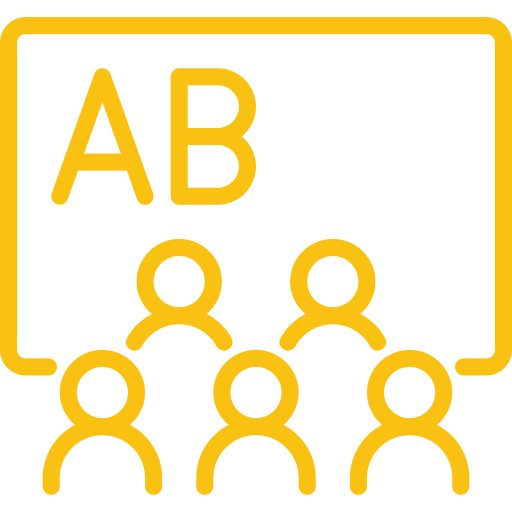What factors impact the cost of a Master’s Degree in education?
Choosing a master’s degree program is a major decision and a significant investment. Most graduate programs fail to give you a breakdown of the overall cost, often simply sharing their tuition rates. Based on our experience, here are the 4 factors that impact the cost of a master’s degree.
Once you are signed up, you’ll find a long list of additional costs, driving up the cost of your advanced degree. We think you deserve to know what to look for, what questions to ask, and everything else you can expect financially.
This article will explore all the costs of most master’s degree programs. Understand that a master’s degree cost varies dramatically from university to university. Depending on various other factors, the price can vary monthly in the same school.
So let’s dive in and look at some factors impacting your education programs. The first stop is the most obvious.
Tuition
So the first thing you’ll see is the cost of tuition, which is not usually the same as the total cost for your master’s degree. There is one cost that is universal, and that is how much you’ll pay for either credit hours or semester hours (these terms are virtually interchangeable). To save time, I’m just going to use credit hours for the rest of this article.
The average price per credit, according to gradschools.com, is $627 per credit. Many universities have prices below $500 per credit, and some schools charge over $1000 a credit. If you’re like most teachers (myself included), you want either:
- The cheapest and fastest degree possible, or
- A degree that opens up new options for you (like administration or a new certification)
Honestly, I went after #1 more than #2. So you go online and see that you can get your graduate degree for a listed price. But there’s a catch… you see the sticker price; then there are all the add-ons. Other factors that are included in tuition (but rarely listed for you to see) include:
4 Factors that Impact The Cost of a Master’s Degree
1. In-state vs. out-of-state tuition
Typically state residents pay less for higher education (at least most public universities) than students from other states since they’ve been paying taxes through the years that have helped pay for those universities.
There are ways to avoid this, and the tuition differences don’t always apply to online master’s students or international students. Here’s a link to more information to help if you want more information
2. Part-time vs. full-time residency
This one is being phased out at many universities, but traditionally the cost has been different for full-time and part-time students. Some universities are holding on, though, still, so double-check before signing up. Most of the current programs are based on a per-credit basis, which is what you should be focusing on
3. Prestige
The more prestige a school has, the more it can charge. If the name on the degree means something to you, you’ll pay a surcharge. If a school is likely to charge extra for the prestige of the school, it’s most likely a private school rather than a public school
And as for the worth of the prestige of your degree, keep in mind that it typically only matters when talking about high-paying jobs, which are not too familiar in education. Here’s a link to read more about whether or not it’s worth it to pay extra for the name on the diploma.
4. Plus, plenty of other fees are listed later on in this article
On top of the tuition cost, there are other ways universities hide fees to make it look like they have more affordable tuition. Some of the fees they add on include:
Application fee
Typically under $100, this is another expense prospective students often are expected to pay. Many online programs now waive this fee, but it’s always worth asking about
Course Materials
Some master’s programs make their costs look lower because they don’t figure in the books and other materials required for the courses. That may not seem like much, but many programs require you to purchase your own textbooks, which can easily add hundreds to your total cost
Technology Fee
Many graduate students find it hard to believe that they are charged a technology fee when they are obtaining their degree via online education. Your computer, your internet, but there’s still a technology fee. Usually, this fee is in the hundreds of dollars and can be a frustrating extra cost.
Graduation Fee
It’s hard to believe, but many graduate students find out later that there is a graduation fee that wasn’t mentioned before signing up, putting just a little extra bump on the cost of attendance for your school.
Time
A significant cost is the amount of time required for you to travel to the school if you choose to do the old-school onsite degree. But by this time, most people are looking to save time and get an online degree.
Even this is misleading, as not all online degrees require you to be there simultaneously as everyone else. The time you spend with the instructor and other students online at a specific time can vary greatly, so figure this out.
Also involved with time is the length of the program. The longer you take courses, the more money it will cost you. Some degrees are accelerated, letting you finish the degree in as little as 12 months. Some can take more than two years.
Financial Aid Eligibility
This is something most educators are interested in. Since we don’t make much money as an overall group, it’s essential to keep as much as possible. Generally speaking, there are often quite a few options available, though. Consult this checklist from the U.S. Department of Education to give you a few ideas of what you’ll need to do to make sure you are covered.
It’s also good to compare private student loans to federal student aid. Again, the U.S. Department of Education did a great job showing both options’ positives and negatives.
At the end of the day, you should see what your options are and what is available for you. Contact the financial office and let them know your financial need before you make a final decision.
Other Fees to Watch Out For
- Enrollment fees (for each semester)
- Health fees
- Activity fees
- Lab fees
- Thesis processing fees
Just to name a few. When you talk to your advisor, ensure you get ALL the expenses you’ll be expected to pay
Summary
So to summarize, if you want to know the actual cost of your education, ask about (or research on your own) the following:
- Cost per credit hour
- Total number of credit hours
- Is there a difference for prospective students from in-state vs. out-of-state?
- Are there any other fees?
- How much time am I required to participate in discussions, do assignments, or do anything else for this course?
- Is there financial aid available for me?
So how can Midwest Teachers Institute help?
Since teachers founded us, MTI has always strived to keep things simple and affordable for our fellow educators. In 2019 we formed partner programs with Colorado State University-Pueblo, with the sole purpose of offering an online master of education program that was the cheapest degree available, regardless of which state you live in.

So here are the simple answers to our costs:
- No application fee.
- 4 classes with CSUP, 2 per semester (although those with busy schedules can take longer).
- CSUP charges $470 per credit hour (subject to change).
- CSUP requires 11 credits for their portion of the degree.
- Financial aid is available for CSUP courses.
- 9 classes with MTI; you can take them as fast or as slow as you want.
- Each MTI degree course is $395…per course (or about $131 per credit)! That also includes all materials for the course, including the book if one is used. And it’s yours to keep after the course.
- All of the MTI degree courses are correspondence, so you complete the work and email it back to us.
- All assignments for MTI courses are available before you sign up, you can click here to go to our page and start viewing degree information.
- Prices are the same regardless of the state you live/work in
- It’s possible to finish the degree in 2 semesters, although the price doesn’t change regardless of the academic year you start or complete the degree.
There are also times that CSUP offers tuition waivers to help discount the price of their degree with us. They know what it’s like to be an educator and how precious each dollar is for educators. An example of this is the $650 tuition credit from Jan through May 15, 2022, $650 to help provide the lowest average cost of a master’s degree in the U.S
Now that you know what factors impact the cost, it’s time to take the first steps towards getting your master’s and improving your salary.
Check out our affordable master’s degree programs here:
- Master’s Degree in Physical Education
- Master’s Degree in Special Education
- Master’s Degree in Curriculum and Instruction
- Master’s Degree in ESL/ELL (Linguistically Diverse Education)
Contact us today with any questions; we’d be happy to help!
























